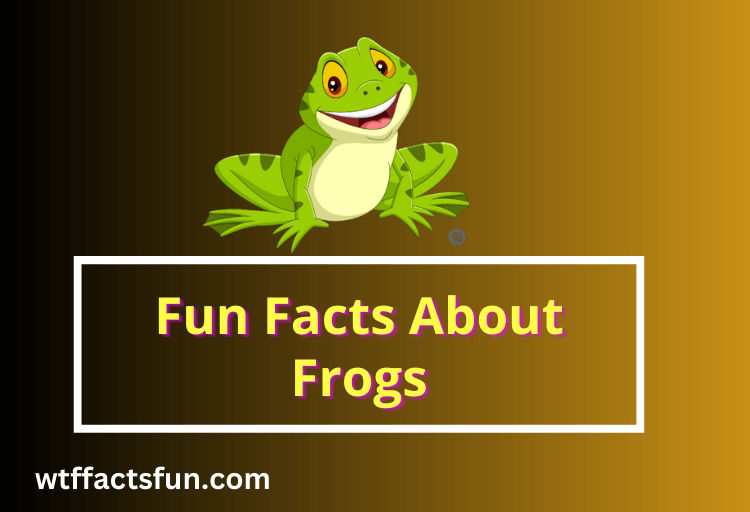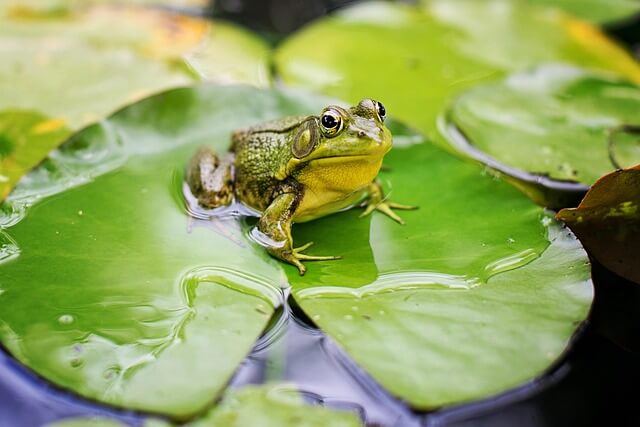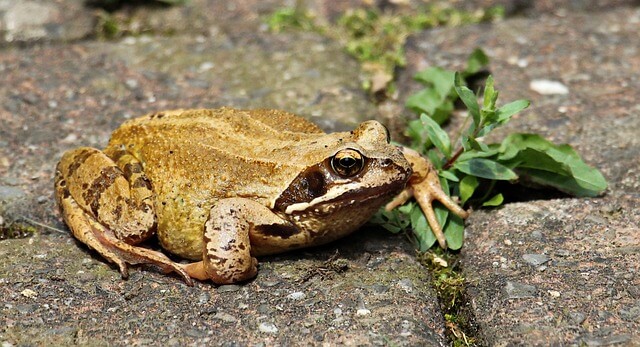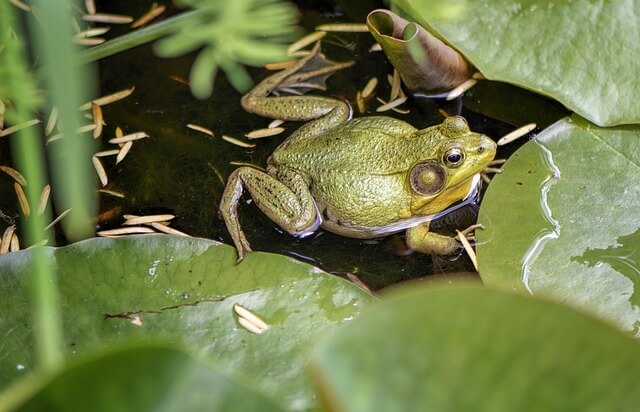
Table of Contents
- 1 Fun Facts about Frogs
- 2 1. Frog Diversity
- 3 2. Amphibious Abilities
- 4 3. Environmental Indicators
- 5 4. Toxic Skin
- 6 5. Leaping Ability
- 7 6. Unique Reproductive Behaviors
- 8 7. Food Source
- 9 8. Camouflage
- 10 9. Skilled Swallowers
- 11 10. Important Ecosystem Role
- 12 11. Hibernation
- 13 12. Vocalizations
- 14 13. Powerful Legs
- 15 14. Unique Eye Structures
- 16 15. Endangered Species
- 17 16. Longevity
- 18 17. Jumping Technique
- 19 18. Parental Care
- 20 19. No Teeth
- 21 20. Cultural Significance
- 22 FAQ for Fun Facts about Frogs
Fun Facts about Frogs
Fun Facts about Frogs: Frogs are amazing creatures that have captured the imaginations of people around the world for centuries. These amphibians have unique characteristics and behaviours that make them fascinating to study and observe. In this article, we will explore some fun facts about frogs that you may not have known before.
1. Frog Diversity
Did you know that there are over 7,000 species of frogs worldwide? Frogs come in a wide variety of shapes, sizes, and colours. They range in size from less than 0.4 inches to over 12 inches in length, and their colours can range from bright and vibrant to dull and camouflaged. Frogs are found on every continent except Antarctica and can live in a wide variety of habitats, from rainforests to deserts.
2. Amphibious Abilities
Frogs are amphibians, which means they can live on land and in water. Most frogs are born as aquatic tadpoles and later transform into terrestrial adults. Their unique ability to live in both environments makes them important members of many ecosystems.
In fact, some frog species have even evolved unique adaptations that allow them to survive in extreme environments. For example, the wood frog can freeze solid during winter and then thaw out in the spring and continue living.
3. Environmental Indicators
Frogs are important indicators of environmental health. They are sensitive to changes in the environment, such as pollution and climate change, and can serve as early warning signs of problems. Because of this, scientists use frogs to monitor the health of ecosystems around the world.
4. Toxic Skin

The brightly coloured skin of some frogs contains toxins that can deter predators. For example, the poison dart frog secretes a powerful neurotoxin that can paralyze or kill predators. Interestingly, these toxins are not harmful to the frog itself. Instead, they use them as a defence mechanism to protect themselves from predators.
5. Leaping Ability
Frogs are skilled jumpers and can leap up to 20 times their body length in a single bound. This ability helps them escape predators and catch prey. Some frog species can even jump further underwater than they can on land, allowing them to escape danger in their aquatic habitats.
6. Unique Reproductive Behaviors
Some frog species have unique reproductive behaviours. For example, the male Darwin’s frog carries the fertilized eggs in his vocal sac until they hatch. The male frog will not eat or leave the eggs until they have hatched, at which point the young will emerge from his mouth. This unusual behaviour is thought to provide the eggs with a safe environment to develop and grow.
7. Food Source
Frogs are an important food source for many animals, including birds, snakes, fish, and humans. In some cultures, frogs are considered a delicacy and are eaten fried, grilled, or in soup. However, over-harvesting of frog populations for food has led to declines in some species and is a cause for concern.
8. Camouflage
Some frog species can change colour to blend in with their surroundings. This ability is known as camouflage and helps them avoid predators. The ability to blend in with their environment can also help them catch prey, as they can surprise their prey by blending in with their surroundings.
9. Skilled Swallowers
Frogs use their eyes to help them swallow food. They push their eyes down into their skull to help push food down their throat. This ability allows them to swallow prey that is much larger than their head.
10. Important Ecosystem Role

Frogs play an important role in various ecosystems around the world. They help control insect populations, including mosquitoes and other pests, by consuming them as part of their diet. In addition, some frog species serve as indicators of ecosystem health. By monitoring the health and population of frog species in an ecosystem, scientists can gain insights into the overall health of that ecosystem.
In some cases, declines in frog populations can signal larger environmental problems, such as pollution or habitat destruction. Therefore, protecting and conserving frog populations can have far-reaching effects on the health of entire ecosystems.
11. Hibernation
Some frog species hibernate during the winter to survive the cold temperatures and lack of food. They bury themselves in the mud or under leaves to protect themselves from the cold and conserve energy.
12. Vocalizations
Frogs use a variety of vocalizations to communicate with each other. These sounds can range from croaks to chirps to whistles. Male frogs often use vocalizations to attract mates and defend their territory from other males.
13. Powerful Legs
Frogs have powerful hind legs that allow them to jump great distances and swim quickly. They use their legs to jump and climb, as well as to swim and escape danger in aquatic habitats.
14. Unique Eye Structures
Frogs have unique eye structures that allow them to see in almost all directions. Their eyes are located on the sides of their head, which gives them a wide field of vision. They also have a third eyelid, called a nictitating membrane, that helps protect their eyes underwater.
15. Endangered Species
Unfortunately, many frog species are endangered due to habitat loss, pollution, and the introduction of non-native species. Some species have experienced population declines of over 80% in recent decades. Conservation efforts are underway around the world to protect these important animals and their habitats.
16. Longevity
While the lifespan of frogs varies between species, some frogs can live for a long time. For example, the American bullfrog can live up to 10 years in the wild, while some tree frogs can live for over 15 years in captivity.
17. Jumping Technique

Frogs use a unique jumping technique called “frog-style jumping.” Instead of using their muscles to jump, they use elastic energy stored in their tendons and bones. This allows them to jump farther and with less energy than other animals.
18. Parental Care
While most frog species leave their eggs to develop on their own, some species provide parental care to their young. For example, some species of poison dart frogs lay their eggs on the ground and then transport their tadpoles to a water source on their backs.
19. No Teeth
Frogs do not have teeth, so they use their sticky tongue to catch and swallow their prey whole. Their tongue can shoot out up to one and a half times their body length in a fraction of a second.
20. Cultural Significance
Frogs have cultural significance in many parts of the world. In ancient Egyptian mythology, the frog was a symbol of fertility and rebirth. In Chinese culture, the frog is a symbol of good luck and prosperity. In some African cultures, frogs are considered sacred and are associated with rain and fertility.
FAQ for Fun Facts about Frogs
Why are frogs so amazing?
Frogs are amazing because they have unique physical adaptations, and fascinating behaviours, and play important ecological roles. They are also considered bioindicators, providing insights into the health of ecosystems.
What do frogs eat fun facts?
Frogs are carnivorous and eat a variety of insects, spiders, worms, and small vertebrates. Some larger frog species have been known to eat small mammals, birds, and even other frogs.
How many hearts do frogs have?
Frogs have three hearts: two atria and one ventricle. This unique circulatory system allows for efficient gas exchange and helps them regulate their body temperature.
Why do people love frogs?
People love frogs for their unique physical features, interesting behaviors, and important ecological roles. They are also often seen as cute and charming creatures that capture our imagination.
What are the superpowers of a frog?
Frogs have a unique set of superpowers that include the ability to jump long distances, change color for camouflage, and secrete toxic chemicals for defense.
Final Words:
In conclusion, frogs are fascinating animals that play important roles in various ecosystems. From their unique adaptations to their important ecological and cultural roles, frogs are truly amazing creatures that deserve our attention and protection. By learning more about these fascinating amphibians, we can appreciate their importance and work to conserve them for future generations.
Read also:
30 Fun Facts About Confucianism
Amazing Facts Daily Devotional
22 Fun Facts About Raccoons For Preschoolers
18 Fun Facts About Music – Discover the Fascinating World of Music